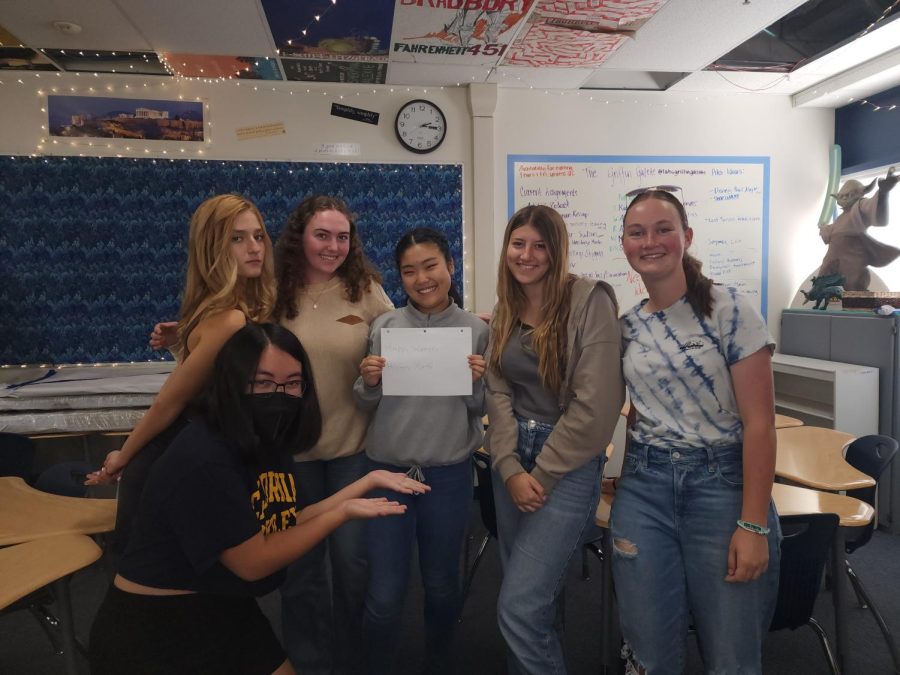It’s Women’s History Month!
The influence of women throughout history is highlighted and appreciated during March
LosAl students holding a “Happy Women’s History Month!” sign.
March 21, 2023
LOS ALAMITOS, CA — With every step of their uniform march, 15,000 women take to the streets, recognizing years of repressed anger. On March 8, 1908, female garment workers fought against gender discrimination and unequal pay, while also demanding basic rights such as the rights to vote and hold public office.
A year later, the Socialist Party of America commemorated these brave women by declaring Feb. 28 as International Women’s Day. However, it did not become international until 1910 when a group of German activists suggested to the International Conference of Working Women that the holiday should be spread to multiple countries. The United States, Austria, Switzerland, Germany, and Denmark all declared it a national holiday.
Americans celebrated the day on the last Sunday of February. When Russia celebrated the holiday in 1913, they followed America in observing the day on February’s last Sunday. Since Russia used the Julian calendar until 1918, they celebrated the day on what America’s Gregorian calendar considered March 8. The date of International Women’s Day was changed to March 8 for the Russian women who celebrated it on that day, and coincidentally, the day is also the anniversary of the 1908 garment workers’ strike.
It was not until decades later, in 1975, that the United Nations officially recognized International Women’s day as a holiday.
“International Women’s Day is a call to action,” UN Secretary-General António Guterres said in a video message on International Women’s Day 2023. “Action to stand with women who are demanding their fundamental rights at a great personal cost.”
Three years later, the education task force of Sonoma County, California, held a week-long celebration for Women’s History Month, which began a movement that would spread to other communities and eventually reach national fame. The National Women’s History Alliance (NWHA) petitioned for Congress to adopt Women’s History Week as an official holiday. President Jimmy Carter signed Women’s History Week into action with its first celebration being held the week of March 7, 1982.
“Too often, the women were unsung and sometimes their contributions went unnoticed,” President Carter said in his presidential proclamation of Women’s History Week. “But the achievements, leadership, courage, strength, and love of the women who built America were as vital as that of the men whose names we know so well.”
The NWHA kept pushing for the national recognition of women and held a campaign for the entire month of March to be declared Women’s History Month. In March of 1987, the month became officially known as Women’s History Month.
The history of this holiday is extensive and deep, and it is only one small part of the impact women have on the world. Women’s History Month is an international celebration for the women of the past who, unaccredited, built the world, as well as women currently fighting modern issues. It also serves to bring awareness to and protest the issues that women experience. To celebrate this Women’s History Month, you can donate to women’s nonprofits, consume feminist media such as books or documentaries, support female-owned businesses, and, as the month is titled, research women’s history.






